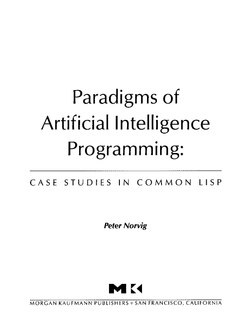 W
W1 the Road is an experimental novel composed by artificial intelligence (AI). Emulating Jack Kerouac's On the Road, Ross Goodwin drove from New York to New Orleans in March 2017 with an AI in a laptop hooked up to various sensors, whose output the AI turned into words that were printed on rolls of receipt paper. The novel was published in 2018 by Jean Boîte Éditions.
 W
WAdaptive Behavior is a bimonthly peer-reviewed scientific journal that covers the field of adaptive behavior in living organisms and autonomous artificial systems. The journal was established in 1992 and is the official journal of the International Society of Adaptive Behavior. It was established in 1992 and is published by Sage Publications.
 W
WArtificial Intelligence is a scientific journal on artificial intelligence research. It was established in 1970 and is published by Elsevier. The journal is abstracted and indexed in Scopus and Science Citation Index. The 2019 Impact Factor for this journal is 6.628 and the 5-Year Impact Factor is 5.944.
 W
WArtificial Intelligence: A Modern Approach (AIMA) is a university textbook on artificial intelligence, written by Stuart J. Russell and Peter Norvig. It was first published in 1995 and the fourth edition of the book was released 28 April 2020. It is used in over 1400 universities worldwide and has been called "the most popular artificial intelligence textbook in the world". It is considered the standard text in the field of artificial intelligence.
 W
WComputational Intelligence is a peer-reviewed scientific journal covering research on artificial intelligence. It was established in 1985 and is published by Wiley-Blackwell. Since 2009, the editors-in-chief have been Ali Ghorbani and Evangelos Milios.
 W
WThe Royal Swedish Academy of Sciences is one of the royal academies of Sweden. Founded on June 2, 1739, it is an independent, non-governmental scientific organization which takes special responsibility for promoting the natural sciences and mathematics and strengthen their influence in society, whilst endeavouring to promote the exchange of ideas between various disciplines.
 W
WHow to Create a Mind: The Secret of Human Thought Revealed is a non-fiction book about brains, both human and artificial, by the inventor and futurist Ray Kurzweil. First published in hardcover on November 13, 2012 by Viking Press it became a New York Times Best Seller. It has received attention from The Washington Post, The New York Times and The New Yorker.
 W
WThe Journal of Artificial Intelligence Research (JAIR) is an open access peer-reviewed scientific journal covering research in all areas of artificial intelligence. It was established in 1993 as one of the first scientific journals distributed online. Paper volumes are printed by the AAAI Press. The Journal for Artificial Intelligence Research (JAIR) is one of the premier publication venues in artificial intelligence. JAIR also stands out in that, since its launch in 1993, it has been 100% open-access and non-profit.
 W
WOn Intelligence: How a New Understanding of the Brain will Lead to the Creation of Truly Intelligent Machines is a 2004 book by Palm Pilot-inventor Jeff Hawkins with New York Times science writer Sandra Blakeslee. The book explains Hawkins' memory-prediction framework theory of the brain and describes some of its consequences.
 W
WParadigms of AI Programming: Case Studies in Common Lisp (ISBN 1-55860-191-0) is a well-known programming book by Peter Norvig about artificial intelligence programming using Common Lisp.
 W
WRapture for the Geeks: When AI Outsmarts IQ (2009) is a non-fiction book by American Law Professor Richard Dooling. The book provides an alarming window into a hypothetical future technological singularity, where machine intelligence outstrips human intelligence. The book also provides a historical review of man's relationship with machines, including dangers caused by other technologies such as nuclear weaponry.